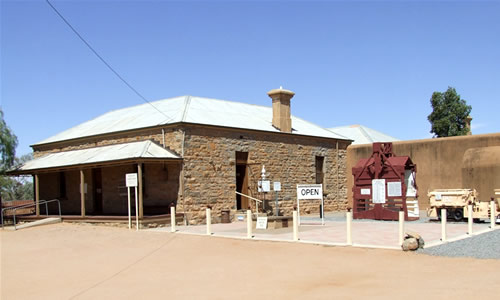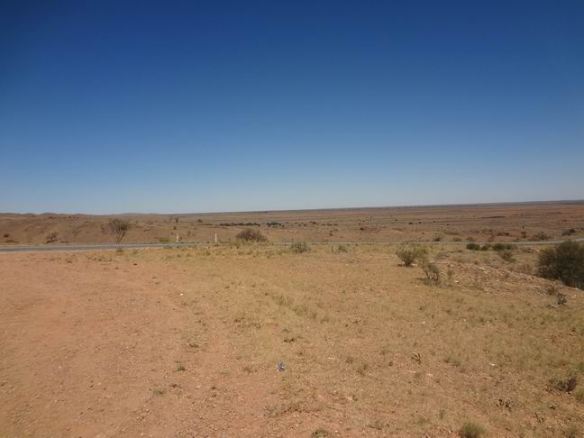 M/V Chilka
M/V Chilka
The Bay of Biscay and Gibraltar behind us and Chilka heads for Almeria on the southern coats of Spain.
From memory it was a small town with few attractions for the cadets, but we loaded over 2000 barrels of grapes in to our freezer chambers destined for Mombasa, in Kenya.
Chilka was not a freezer ship, but a dry cargo vessel, with some freezer / chiller cargo space.
At the same time, we were unloading bags of cement. Each day during the passage from London we tested the bilges for water, and at each test we found that we were dry, which was unusual, because we always had some water in the bilges. On arrival in Almeria we began to discharge the bags and found that the cement had been contaminated with water and had set hard. The noise of jackhammers was soon heard as we completed the discharge of cement.

Our next port was Malta where we berthed near the BISNC company school ship Devonia. This vessel had been a troop ship and had been converted to carry school children around Europe on educational cruises.
The Devonia cadets where known to all of us cadets in the Chilka, so that evening it was an ‘educational’ down the Gut as it is locally known, or as its correct name Strait Street (Strada Stretta, in Maltese) – which was a famous bar area of Malta in the 1950’s & the early 60’s. We were only in Malta for the one night and sailed the next day for Port Said to join the southbound convoy through the canal.
The British had helped Malta to be free of the French in 1800, and Malta had asked to be a sovereign nation within the British Empire – this was granted at the end of the Napoleonic war in 1815.
Malta was given complete self rule after WW2, in 1947, and she was considering the idea of being part of the UK, or have dominion status in the same way as Australia, Canada & New Zealand, but later decided on becoming an independent country, which took place in September 1964, and at the same time she joined the Commonwealth.

Found this on the internet which gives a good idea as to how narrow Strait Street (the GUT) is . . . .
It was a popular place with the Royal Navy, and as we were dressed in ‘civvies’ we stood out some what.
Two days after clearing Port Tewfik, which is at the southern end of the Suez Canal, we were off Port Sudan, and within a short time alongside the wharf.
Port Sudan was a dusty town to say the least, but they did have a picture house, which I visited on my first evening ashore, to see ‘The Great Escape’, because it was the only English-speaking film available.

I’d seen it in the UK, but viewing it in Sudan was a completely different. I had the choice of ‘Stalls’ or ‘Circle’, so for the price I chose the ‘Circle’, which was just as well. Between the Stalls and the Circle area there were rolls of barbed wire to keep ‘Stalls’ patrons from cheating the system and sitting in the Circle, and I thought the barbed wire was to enhance the realty of the film. . . I should get out more.
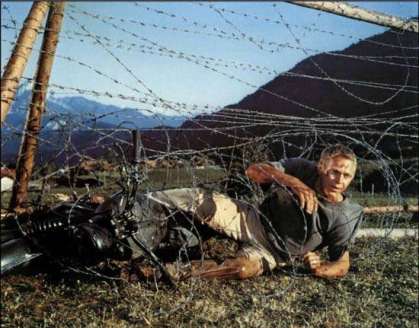
From the internet, he was not watching the film with me.
Next day I was invited by the second officer to try out his aqualung off the reef that shielded the port. We borrowed a small boat to get to the reef.
I didn’t have any idea as to how to use an aqualung underwater, so the whole exercise was quite exciting. He explained what I had to do, and how to breathe normally under water, and the experience, for me, was out of this world to be a part of the under-sea creature environment.

I’d been down about ten minutes when the sun over my right shoulder ‘went out’ as if a cloud had passed in front of the sun. The problem was that I’d not seen a cloud in the last two days, so looked up to check what had caused the ‘cloud’. It was a large shark. I didn’t have any idea what type of shark it was; all I knew was that I was in his area and he was bigger and stronger than me. Fortunately, I was able to swim ‘backwards’, while watching the shark, and as soon as I touched the coral reef I felt safer. I don’t know if it is true that a shark would not get too close to a reef in case it damaged itself on the reef, but at the time I trusted this thought, and eventually made my way in to the coral reef’s shallow area, where I was picked up in the borrowed boat. After this episode I only went snorkeling near a reef.
Aden, one of my least ‘favoured’ ports of call was our next stop. We worked cargo at night because of the heat and the nature of the cargo – ice cream and cheese. I’d never seen a cargo unloaded so fast as this cargo during the night. The labour must have been on contract that any loss of ice cream would have been a penalty or perhaps they had been promised an ice cream on completion.

At the opening of the Suez Canal in 1869, Aden became an important coaling station on the route to India and also as a base against pirates. It seems that not much has changed in the area with regard to pirates since 1869.
Abdel Nasser of Egypt, in late 1963 called for a Pan Arabist cause, which partly ignited the Aden Emergency with the throwing of a grenade in late 1963 at British officials at Aden airport. The grenade killed a woman and injured fifty others. An anti-British campaign had begun using mainly grenades. The two main anti- British groups were the NLF (National Liberation Front) and FLOSY (Front for the Liberation of Occupied South Yemen).
The requirement to keep law and order brought in more and more troops, which is why we had so much ice cream to unload that night.

My British readers will remember this advert from the mid 60’s.
The British withdrew from Aden at the end on November 1967, the Suez Canal had been closed by Nasser on the eve of the Six Day War, (5th to 10th June 1967), and then it became the demarcation line between the Egyptians and the Israelis forces. This contributed to years of disruption to the Yemeni economy and Aden in particular.
It appears they are still fighting among themselves over fifty years later.
From Aden we set course for Mombasa, in Kenya. Unlike today we did not have to worry about pirates as we sailed down the Somalian coast.
For the movie buffs, I borrowed the title of a film for this blog, with a slight, alteration,

A classic British film from 1958.


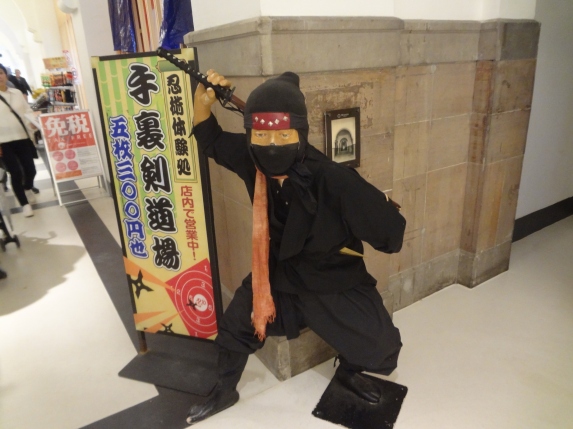
 We had lunch in this restaurant – more of this guy in another blog
We had lunch in this restaurant – more of this guy in another blog A day later I found out that I could get it at the Outriggers Bar. A small detail, but why not make sure all bars carry stock that is listed on the menu. A few days later I bought the last can of Guinness in the Explorers Lounge. This time I couldn’t find Guinness in any other bar – why?
A day later I found out that I could get it at the Outriggers Bar. A small detail, but why not make sure all bars carry stock that is listed on the menu. A few days later I bought the last can of Guinness in the Explorers Lounge. This time I couldn’t find Guinness in any other bar – why?

 Maureen doesn’t drink alcohol, but occasionally she likes a small Champaign, which we have bought during past cruises in small bottles.
Maureen doesn’t drink alcohol, but occasionally she likes a small Champaign, which we have bought during past cruises in small bottles. When I asked for a single small bottle of Korbel (187 ml) I was told that they had ‘run out’ and that the only Champaign available was in a 750 ml bottle, which was too much for Maureen to drink on her own.
When I asked for a single small bottle of Korbel (187 ml) I was told that they had ‘run out’ and that the only Champaign available was in a 750 ml bottle, which was too much for Maureen to drink on her own.
 They sold Asahi on draft only in one bar, but you could only buy it in half pints, but you could buy draft Heineken in pint glasses, why the difference?
They sold Asahi on draft only in one bar, but you could only buy it in half pints, but you could buy draft Heineken in pint glasses, why the difference? I did manage to get a few cans of Sapporo, but never saw any Kirin although it was on the drinks menu.
I did manage to get a few cans of Sapporo, but never saw any Kirin although it was on the drinks menu. I can not remember what this starter was called, but from memory it was rice stuffed inside a tube, of what, I don’t know, but I thought it very bland.
I can not remember what this starter was called, but from memory it was rice stuffed inside a tube, of what, I don’t know, but I thought it very bland. The menu choice was limited to fish, chicken or meat (not both), and pasta, which is one food group that I don’t like. Pasta of sorts seemed to be on the menu most nights. Cheap and easy.
The menu choice was limited to fish, chicken or meat (not both), and pasta, which is one food group that I don’t like. Pasta of sorts seemed to be on the menu most nights. Cheap and easy.

 Sunrise over Aqaba
Sunrise over Aqaba In the distance Israel, behind us Saudi Arabia, and further to the left of Israel is Egypt as we came alongside Aqaba.
In the distance Israel, behind us Saudi Arabia, and further to the left of Israel is Egypt as we came alongside Aqaba.
 Thomas Edward Lawrence, 1880 – 1935
Thomas Edward Lawrence, 1880 – 1935 It wasn’t long after we had driven out of Aqaba that we came across camels.
It wasn’t long after we had driven out of Aqaba that we came across camels. We stopped at a small railways station for a ‘photo op’ and the single line reminded me of the film, and when I turned around . . . the train engine fitted the scene, because it was used in the film.
We stopped at a small railways station for a ‘photo op’ and the single line reminded me of the film, and when I turned around . . . the train engine fitted the scene, because it was used in the film. if Peter O’Toole had stood on the roof of the train I wouldn’t have been surprised.
if Peter O’Toole had stood on the roof of the train I wouldn’t have been surprised.

 It was real, not a film set.
It was real, not a film set. The meeting area for our desert transport was more upmarket than the railway station, with a few shops and toilet facilities. The large rock face in the background is called the Seven Pillars, which was the inspirational name that Lawrence used when he wrote The Seven Pillars of Wisdom’.
The meeting area for our desert transport was more upmarket than the railway station, with a few shops and toilet facilities. The large rock face in the background is called the Seven Pillars, which was the inspirational name that Lawrence used when he wrote The Seven Pillars of Wisdom’. Nothing flash about our desert transport – the utes made the Aussie’s feel at home. I whispered to Maureen to grab one with a roof covering, how ever flimsy, to keep us in the shade. Each truck carried six passengers in the back – hanging on was the object of the trip once the truck started to move.
Nothing flash about our desert transport – the utes made the Aussie’s feel at home. I whispered to Maureen to grab one with a roof covering, how ever flimsy, to keep us in the shade. Each truck carried six passengers in the back – hanging on was the object of the trip once the truck started to move. If I’d have heard John Wayne shouting ‘Head ’em up move ’em out’ I wouldn’t have been surprised.
If I’d have heard John Wayne shouting ‘Head ’em up move ’em out’ I wouldn’t have been surprised.
 The scenery was spectacular as we bounced over the ground – they didn’t have any roads across the desert.
The scenery was spectacular as we bounced over the ground – they didn’t have any roads across the desert. We reached a sand hill and were told that if we climbed the hill the views would be magnificent.
We reached a sand hill and were told that if we climbed the hill the views would be magnificent. It didn’t look all that hard so I started to climb, Maureen stayed with the trucks.
It didn’t look all that hard so I started to climb, Maureen stayed with the trucks. In the very soft sand each foot step was energy sapping – and my new pacemaker started to work overtime.
In the very soft sand each foot step was energy sapping – and my new pacemaker started to work overtime. Nearing the top – gasp, gasp, keep pumping . . .
Nearing the top – gasp, gasp, keep pumping . . . Made it ! and the driver was correct the views were just great.
Made it ! and the driver was correct the views were just great. Looking back to our convoy of trucks.
Looking back to our convoy of trucks. I tried to capture the distances and the depth of beauty – the isolation, the quiet and as Lawrence himself said, the desert is clean.
I tried to capture the distances and the depth of beauty – the isolation, the quiet and as Lawrence himself said, the desert is clean. Off again until we came to a camp with camels. The offer being USD $15 per person to ride a camel to the next stop (about twenty minutes by camel). Quiet a few took them up on the camel owner’s offer.
Off again until we came to a camp with camels. The offer being USD $15 per person to ride a camel to the next stop (about twenty minutes by camel). Quiet a few took them up on the camel owner’s offer. The rest of us climbed back in to our trucks for a more ‘comfortable’ ride.
The rest of us climbed back in to our trucks for a more ‘comfortable’ ride.
 A cup of tea at a Bedouin camp – as you see the latest addition to the Bedouin camel is blue (on the right of the picture).
A cup of tea at a Bedouin camp – as you see the latest addition to the Bedouin camel is blue (on the right of the picture). Small glasses of tea were offered – brewed using the open fire. Cardamom seeds were added to the drink after it had been brewed. The seed gave the drink a distinctive taste which was not unpleasant. Of course they had various articles for sale.
Small glasses of tea were offered – brewed using the open fire. Cardamom seeds were added to the drink after it had been brewed. The seed gave the drink a distinctive taste which was not unpleasant. Of course they had various articles for sale. Outside carved in to a rock was a sculpture of the King of Jordon and also Lawrence.
Outside carved in to a rock was a sculpture of the King of Jordon and also Lawrence. I don’t think the artist had seen Lawrence . . .
I don’t think the artist had seen Lawrence . . . The rest of our group arrived safely and the camel handler started back for the next load of tourists.
The rest of our group arrived safely and the camel handler started back for the next load of tourists. Back on the flat ground again and we suddenly came to a tent hotel – welcome, cold drinks, tea, biscuits, and local music.
Back on the flat ground again and we suddenly came to a tent hotel – welcome, cold drinks, tea, biscuits, and local music. Dining area
Dining area
 Background Arabic music.
Background Arabic music. Where there is faith there is light and strength
Where there is faith there is light and strength Main entrance to the park.
Main entrance to the park.


 Central Park NY
Central Park NY Boat lake Central Park
Boat lake Central Park

 Nemesis, (Goddess of retribution).
Nemesis, (Goddess of retribution). Nemesis wreaked havoc amongst the wooden junks of the Chinese navy during the First Opium War. The first rocket that she fired hit a large junk and caused it to blow up with a huge explosion. The Chinese did not stand a chance against such modern weapons.
Nemesis wreaked havoc amongst the wooden junks of the Chinese navy during the First Opium War. The first rocket that she fired hit a large junk and caused it to blow up with a huge explosion. The Chinese did not stand a chance against such modern weapons. HMS Birkenhead
HMS Birkenhead
 CSS Alabama
CSS Alabama Her moto was – ‘God helps those who help themselves.’
Her moto was – ‘God helps those who help themselves.’

 Her stern is towards Rock Ferry and her bow points to New Ferry, although many comments state that she was broken up at New Ferry.
Her stern is towards Rock Ferry and her bow points to New Ferry, although many comments state that she was broken up at New Ferry.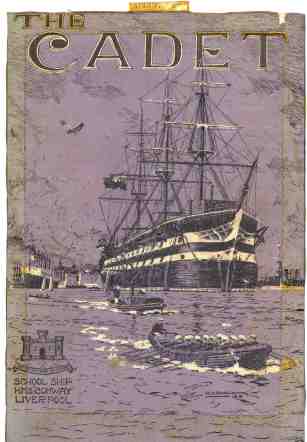
 The Birkenhead war memorial in Hamilton Square has my uncle’s name inscribed up on it – he is buried a short distance outside Ypres in Belgium, having been killed in action in 1917 – he was nineteen.
The Birkenhead war memorial in Hamilton Square has my uncle’s name inscribed up on it – he is buried a short distance outside Ypres in Belgium, having been killed in action in 1917 – he was nineteen.
 He signed up at seventeen, and just before he left, he and his parents visited a show for the troops. It was held at a theatre across the road from the main entrance to Birkenhead Park. I believe my father would have been with them – he would have been six years old at the time.
He signed up at seventeen, and just before he left, he and his parents visited a show for the troops. It was held at a theatre across the road from the main entrance to Birkenhead Park. I believe my father would have been with them – he would have been six years old at the time. Opening day for the park in 1847.
Opening day for the park in 1847.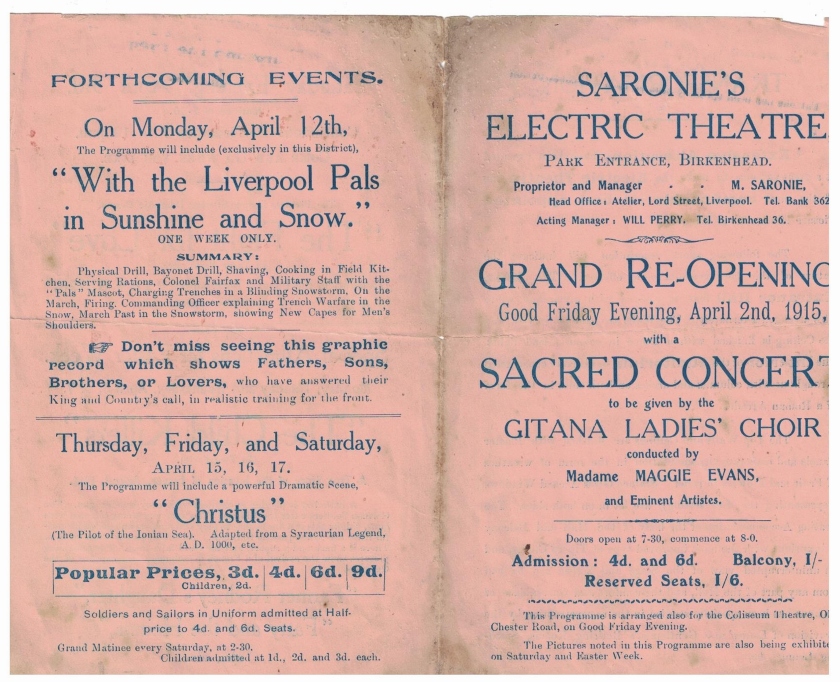

 Approaching Napier.
Approaching Napier.
 This is what is there today – still a church, and a garden of remembrance.
This is what is there today – still a church, and a garden of remembrance. Before the earthquake – picture from NZ Encyclopedia.
Before the earthquake – picture from NZ Encyclopedia.


 The town was rebuilt in the art deco design and fortunately has not been allowed to change. There were moves to pull down certain buildings and to build ‘new’ 1960’s style, but the local historical (Art Deco0) society managed to block most of these moves.
The town was rebuilt in the art deco design and fortunately has not been allowed to change. There were moves to pull down certain buildings and to build ‘new’ 1960’s style, but the local historical (Art Deco0) society managed to block most of these moves.



 Bertie Wooster would have felt quite at home.
Bertie Wooster would have felt quite at home.




 Many of the shops are dated from the 1930’s – our guide explained about the lead lining in the glass, the type of wood and even the ‘in go’. Double frontage windows i.e windows on both side of the entrance door.
Many of the shops are dated from the 1930’s – our guide explained about the lead lining in the glass, the type of wood and even the ‘in go’. Double frontage windows i.e windows on both side of the entrance door.
 Theater built in 1938 and later expanded to the right, but I was more interested in the original frontage. Our guide had the key so in we went,
Theater built in 1938 and later expanded to the right, but I was more interested in the original frontage. Our guide had the key so in we went, Remember this type of lighting in the foyers of cinemas in the 40’s & 50’s? This was well before multiscreens had been ‘invented’.
Remember this type of lighting in the foyers of cinemas in the 40’s & 50’s? This was well before multiscreens had been ‘invented’.



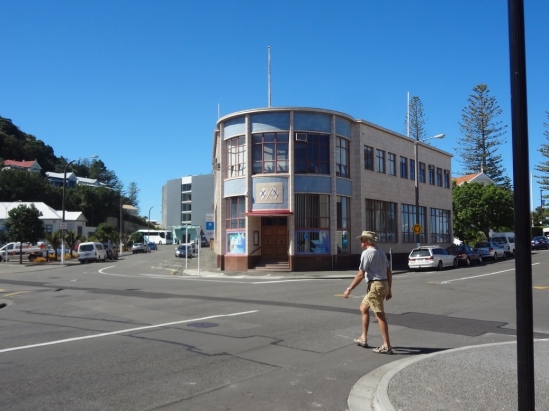


 In 1945 the Americans bombed the real bridge on the river Kwai. The centre parts of the bridge (the flat bits) are new, and the original part of the bridge has the curved sides.
In 1945 the Americans bombed the real bridge on the river Kwai. The centre parts of the bridge (the flat bits) are new, and the original part of the bridge has the curved sides. There was a wooden bridge built about one hundred meters up river from this bridge, and that bridge was used while the prisoners built the metal bridge, which was #277 of over 600 bridges built to accommodate the railway. Later the wooden bridge was used again after the bombing of this bridge.
There was a wooden bridge built about one hundred meters up river from this bridge, and that bridge was used while the prisoners built the metal bridge, which was #277 of over 600 bridges built to accommodate the railway. Later the wooden bridge was used again after the bombing of this bridge.

 There is another cemetery a couple of kilometers away with a further 1693 prisoners.
There is another cemetery a couple of kilometers away with a further 1693 prisoners. The notice tells us that the station is the River Kwai Bridge, but it is Kanchanaburi, with a thriving market on the platform area to keep the tourists happy.
The notice tells us that the station is the River Kwai Bridge, but it is Kanchanaburi, with a thriving market on the platform area to keep the tourists happy. Our train has arrive.
Our train has arrive.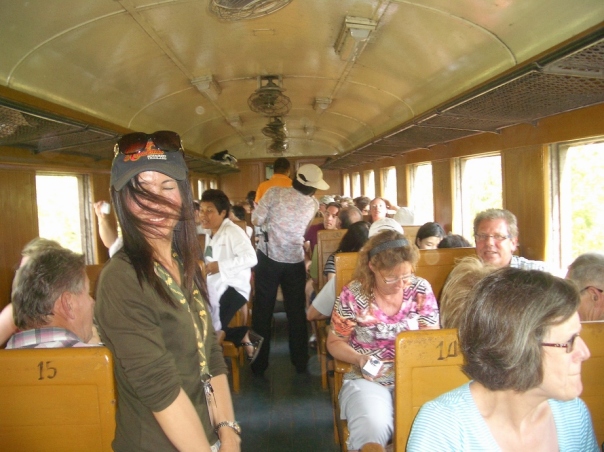
 The line is a single line track so if you miss the train you have to wait for it to do the round trip.
The line is a single line track so if you miss the train you have to wait for it to do the round trip.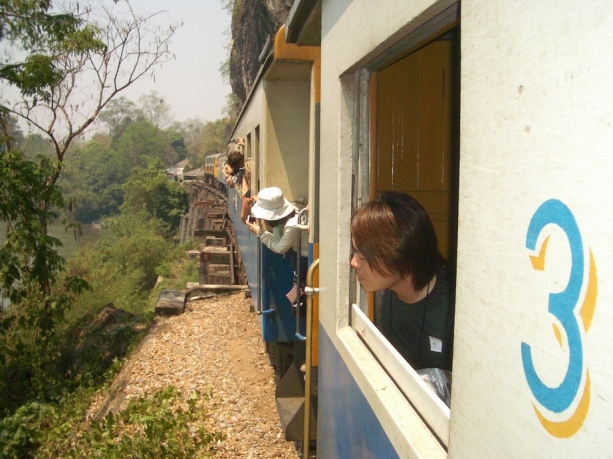 We are about to cross the viaduct, which was built by the prisoners in seventeen days.
We are about to cross the viaduct, which was built by the prisoners in seventeen days. Approaching the end of the line – Numtok.
Approaching the end of the line – Numtok.
 The Wang Pho viaduct – hand made . . . in 2016 it is 73 years old . .
The Wang Pho viaduct – hand made . . . in 2016 it is 73 years old . .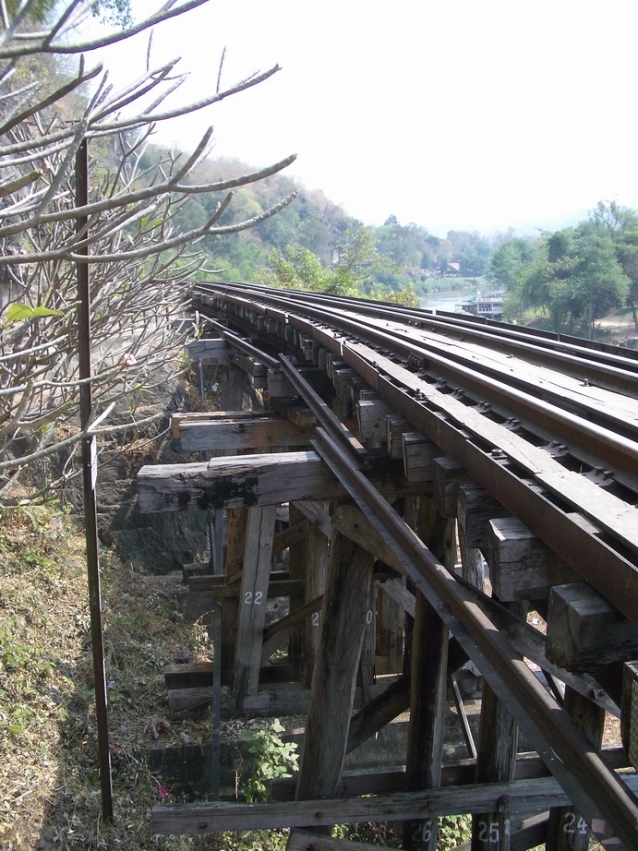


 It was such a success that people flocked to Thailand in an effort to find the Bridge of the River Kwai. The river didn’t exist, but the Khwae Noi did . . . .so in 1960 the river was renamed Kwai, which helped the Thai economy considerably.
It was such a success that people flocked to Thailand in an effort to find the Bridge of the River Kwai. The river didn’t exist, but the Khwae Noi did . . . .so in 1960 the river was renamed Kwai, which helped the Thai economy considerably.













